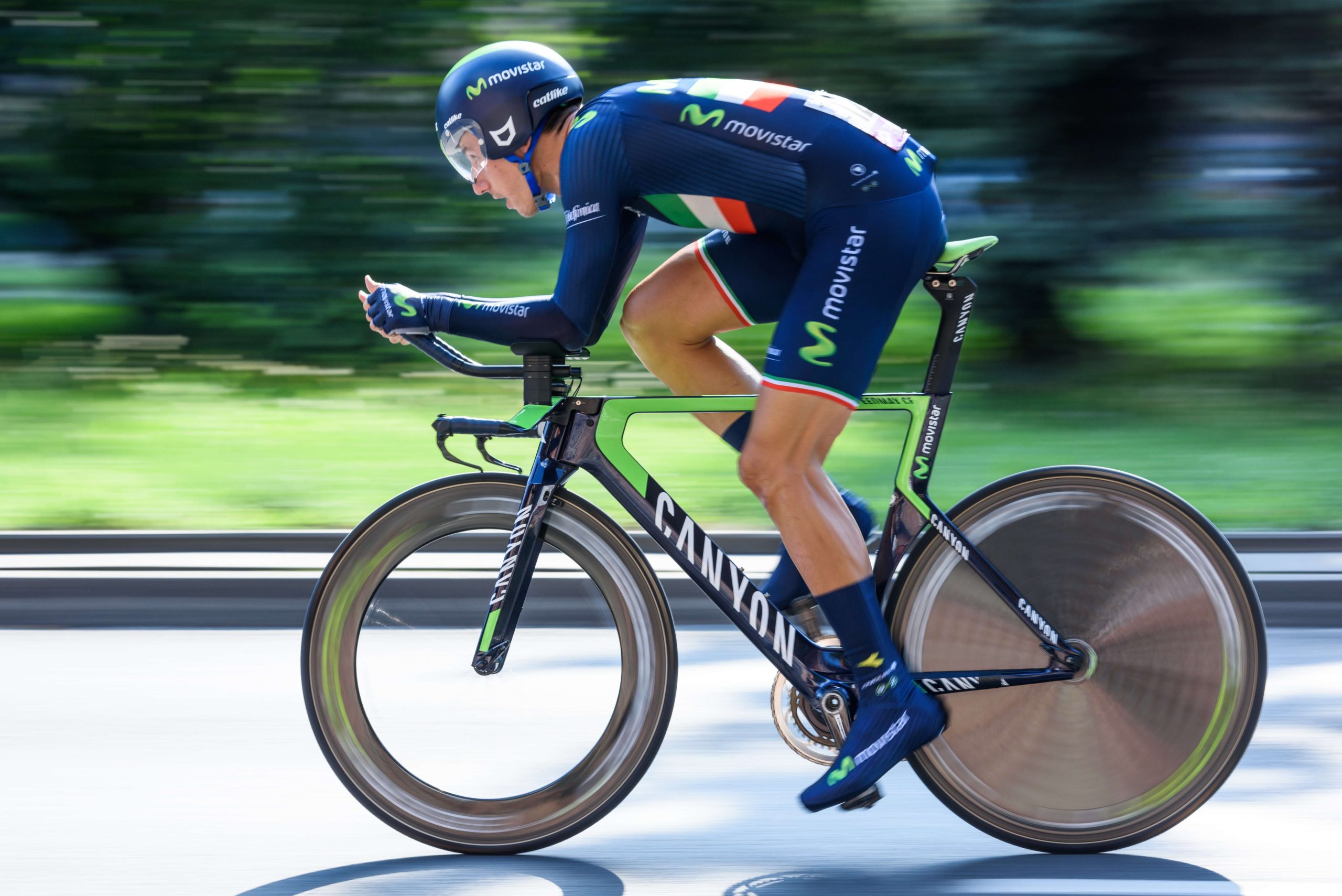Herniated discs are unfortunately common among adults and surgery is typically considered the most effective treatment. However, there are options besides surgery that provide effective options for herniated disc treatment. In this article, we’ll be discussing by non-surgical and non-invasive treatments are the best option as well as the issues that traditional surgery poses.
What is a Herniated Disc
To explain what a herniated disc is, we have to talk about the anatomy of the spinal disc first. Spinal discs are made up of an outer and inner portion. It’s helpful to think about it like a jelly doughnut. The outer part, called the annulus fibrosus, is made up of fibrous collagen rings that enclose the inner part. The inner part is called the nucleus pulposus, and it’s a gel-like substance that helps the spinal disc absorb shock and provide flexibility to the spine.
Herniated discs occur when part of the nucleus pulposus bulges out of the annulus through what is known as an annular tear. This may be accompanied by leaking of the gel-like substance that makes up the nucleus pulposus. This leaking can irritate and inflame surrounding nerves, causing significant pain. Even without leaking, a bulging nucleus pulposus may put pressure on a spinal nerve, which also causes pain.
Although herniated discs can develop in any part of the spine, they’re most common in the lower back or the lumbar spine. However, symptoms are determined by what part of the spine the herniated disc developed in, and usually only affects one side of the body. Symptoms include the following.
- Pain in the shoulder, arm, leg, lower back, buttocks, thigh, calf, or foot, depending on the location of the herniated disc.
- Pain that shoots from one area to another when coughing, sneezing, or moving into certain positions.
- Sharp or burning pain.
- Radiating numbness or tingling in an area of the body served by the nerves affected by the spinal disc.
- Weakness in the muscles served by the affected nerves that may cause you to stumble or affect your ability to lift or hold items.
There are risk factors that make some people more likely to develop a herniated disc as well, such as age, occupation, and activities. Sports that require repetitive twisting and bending of the spine such as football, ice hockey, basketball, and soccer can put people at increased risk.
Non-Surgical Herniated Disc Treatment
There are a variety of traditional surgical options to attempt to provide relief from pain caused by herniated discs. However, open surgery or microdisc can cause many issues and complications. Aside from causing more pain due to soreness of muscles, surrounding tissues, and the sheer size of the incision, open surgery requires a much longer recovery time. It can take a significant amount of time for patients to get back to their favorite activities or work following traditional surgery. In addition to this, many procedures used for herniated disc treatment can leave patients with greatly limited mobility. Risks of spine disc inflammation include failed back syndrome due to scan tissue adhered to spinal muscles, re-herniation, spinal fluid leak, inflammation, and newer injury.
However, non-surgical and non-invasive orthobiologic and cell-based procedures do not pose these problems and have provided many patients with great results. In the sections below, we’ll discuss non-surgical and non-invasive treatment options available at the Center for Sports Medicine.
Intradiscal Nucleolysis
Intradiscal Nucleolysis is a non-surgical and minimally invasive procedure designed to treat herniated disc pain. In this procedure, chondrolytic substances (ozone) are injected into the inner portion of the spinal disc to reduce the size of the herniation and decrease the nerve pressure and pain that a herniated disc can cause. These injections are made with a blend of nutrient ingredients that support tissue regeneration and activate the body’s healing mechanisms. This treatment is especially helpful for patients struggling with chronic pain as a result of disc herniation. These injections provide long-term relief without the need for painkillers or surgery.
Bone Marrow Concentrate
Bone Marrow Concentrate (BMC) is made by collecting bone marrow aspirate from a patient. This is very beneficial for orthopedic medicine because bone marrow contains blood and stem cells, which can be used to stimulate healing of damaged tissues. Some of these stem cells are able to create new tissue such as bone, cartilage, fat, and blood vessels, making them very helpful in healing and treating injuries. In addition to this, BMC contains proteins called cytokines and growth factors, which can help treat tissue. This entire procedure is non-surgical and minimally invasive, as the aspirate is taken simply using a needle. It has provided many patients with the ability to get back to their active lives and has shown great results in clinical practice and the medical literature
Platelet Rich Plasma Injection
Platelet Rich Plasma(PRP) therapy is a treatment that uses concentrated platelets derived from a patient’s own blood. The desired result of PRP is the functional repair of damaged tissues, allowing them to bear greater mechanical stress during activity without pain.
Platelets are one of the main cell lines in our blood. They contain alpha granules, which hold cytokines, growth factors, and bioactive proteins essential for tissue repair and healing. All of the chemical messengers contained within platelets appear to exert bioregulatory actions, which affect soft tissue and cartilage repair, inflammation, bone healing, wound healing, and postoperative blood loss. PRP is often injected into areas where it is difficult for blood to naturally go, promoting soft tissue and bone healing without surgery.
Autologous Stem Cell Injections
Autologous Stem Cell Injection therapy utilizes a patient’s own bone marrow or fat, both of which are rich sources of stem cells. During Autologous Stem Cell Injection therapy, a small volume of the patient’s bone marrow is extracted, placed in a centrifuge, and spun at a high rate of speed to separate the mesenchymal stem cells from other blood cells. The concentrated bone marrow is then injected into the damaged area followed by some of the patient’s PRP to activate the stem cells to turn into the tissue needed for treatment and repair.
SpineRenu
Developed by Dr. Brian Shiple, SpineRenu for treating spine issues caused by damaged or degenerated spinal discs has been in its current, refined state for the past 4 years. During this procedure, the patient’s bone marrow is drawn. This bone marrow is then filtered, centrifuged, and the processed stem cells are injected into the innermost portion of the patient’s damaged or degenerated spinal discs. The patient’s ortho-biologic cells then work to treat the damaged spinal disc in a similar way to how they would work to heal injuries throughout the rest of the body.
Perineural Superficial/DEEP Injections
Perineural Superficial/DEEP Injections (PS or PDI) treat inflamed and injured nerves. This is an effective treatment for patients suffering from chronic nerve pain, such as a pinched nerve. Irritated nerves often cause neuropathic inflammation and neuropathic pain. When PS/DI is used to treat this, a substance is injected around nerves to provide pain relief. The focus of this treatment is to nourish and reset nerves in order to relieve or eliminate pain and restore mobility. PS/DI can decrease nerve impingement and inflammation, which improves the function of muscles and the musculoskeletal system while reducing pain, spasms, and tightness.
The Discseel® Procedure
The Discseel Procedure is a minimally-invasive, non-surgical procedure that utilizes fibrin, a natural biologic formed from fibrinogen during the blood clotting process. Fibrinogen is a protein present in blood plasma from which, using the enzyme thrombin, the body creates fibrin. The Discseel Procedure utilizes your body’s natural healing processes and applies them to your spinal discs, which cannot heal themselves without assistance.
Although spinal discs are meant to absorb shock, repeated stress or traumatic injuries can wear them down over time. This eventually leads to the development of annular tears. Annular tears are a common cause of spinal disc conditions like degenerative disc disease, herniated discs, and sciatica. The fibrin used in the Discseel Procedure is able to seal annular tears, stopping the nucleus pulposus from leaking and stopping painful chemical inflammation and irritation. Fibrin then encourages the spinal discs to grow new tissue over the course of a year, completing the healing process. The Discseel Procedure is minimally invasive and non-surgical.
Non-Surgical Herniated Disc Treatment Options in Glen Mills, Pennsylvania
Our team at the Center for Sports Medicine and Wellness is proud to be experts in the most advanced minimally invasive and non-surgical treatments for our patients. This is why we offer a variety of cell-based and non-surgical options for herniated disc treatment.
We understand that our patients’ top priority is to successfully recover from their conditions while getting back to their lives or their sports as quickly as possible. We’re proud to provide the most advanced and least invasive treatment options.
If you’d like to learn more about our services or contact us to schedule a consultation, please call our office in Glen Mills, Pennsylvania, at (610) 459-4200 or fill out our form. We welcome your inquiry and we look forward to helping you get back to the game of life!

